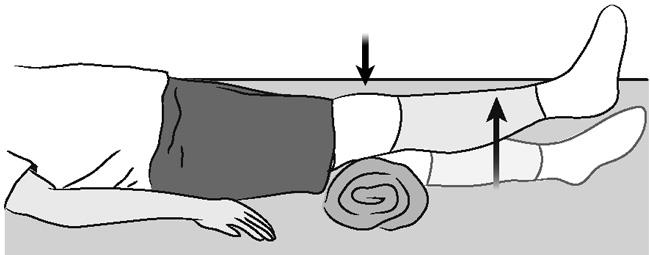Laurie's Blogs.
Mar 2018
Terminal Extension!

I came across a very timely blog. It was about terminal knee extension and the reasons why you (as a therapist… or as a patient too, really) NEED to restore it after a surgery / injury / etc.
It’s timely as well because I have just invented a new exercise for my canine shoulder patients… who also seem to lose terminal shoulder extension. Okay, but first, I give credit for the inspiration to: http://www.themanualtherapist.com/2017/09/5-reasons-why-you-need-to-restore.html
The blog mentions that lack of terminal knee extension in human patients (which included hyperextension, if that is the ‘norm’ on the other side), which can lead to:
1. Worse patient outcomes. There is a correlation with lower subjective satisfaction scores and lack of normal knee extension.
2.Increases in the risk for developing osteoarthritis. Again studies correlate limited knee extension with a higher prevalence of arthritis.
3.Abnormal gait. If you don’t have full knee extension, you don’t get to terminal stance, which messes up (puts more stress/strain) on other structures in the kinetic chain.
4.Increased patellar tendon stress. This can not only lead to patellar tendonitis (‘desmitis’ if we’re using canine-lingo), but could also impact the patello-femoral joint as well.
5.A limitation of the quadriceps and other muscles to optimally function or produce force, thusly leading to a reduced knee extension torque
All in all, other joints, in particular the hip and ankle, accommodate and adapt, which may not be the best thing.
So, the main take home message, is to work on terminal extension with your joint pathology patients. To do so, you really need to think in a multi-targetted approach.
Firstly, do you need to minimize the joint inflammation in order to allow full extension. That might mean NSAIDs, but it could also mean modalities.
Secondly, are you mobilizing the joint in order to achieve, gain, or maintain end range extension? You need to!
Thirdly, what SPECIFIC exercises can you test and prescribe in order to gain or maintain end range extension? This one is near and dear to my heart! The underwater treadmill won’t do it! Long leash walks won’t do it! You need to put on your thinking cap and test out different things to try to get end range extension in the joint you are looking to work with!
I’ve brought this one up before, but I like backwards on a treadmill using resistance to the unaffected leg as a way to get end range shoulder extension. Forwards on an incline treadmill with resistance to the unaffected leg is great for end range stifle extension. Using a tarsal splint in some dogs can result in increased hip extension, but so might cavalettis or slow uphill walking, ascending stairs, or simply reaching for a cookie with front feet up on a higher step and back feet on the ground. Increased tarsal extension? Hmm… I don’t think I’ve ever needed to gain tarsal extension. Same goes for the carpal joints. And elbows! Oi! Elbows are tricky! Send me your favourite elbow exercises! Elbows suck!!
And on that note, I’ll just wrap it up with, ‘Don’t forget to terminal extension!!! ‘
Until next time… Cheers!
Laurie


